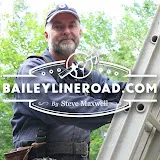0:00
It's the morning of June the 29th and the cattle are pretty happy right now
0:09
I've given them some fresh grass and you can hear them eating
0:16
There's about 45 animals in our pasture now. But I want to show you where these cattle came from
0:28
I've got a little strategy going on here to help improve the soil
0:33
And it has to do with when I take the animals off a certain section
0:37
So, as you can see here, they've got lots of grass, it's fresh
0:42
They've just moved in here about 20 minutes ago. But let's go over and take a look at the place where they were
0:52
It's on the other side of this electrical fence tape here. And you'll see it's not eaten right off
1:02
Some people might accuse me of wasting some grass here. And if I had left the cattle on this section longer
1:12
they would have pulled more feed off of it. But I took them off now when there's still plenty of grass on there
1:22
and plenty left that have been trampled into the ground. That's kind of what I want to do here
1:30
What I've found is that the grass that's left and that gets trampled down to soil level
1:37
provides food for microorganisms in the soil and helps to improve it
1:47
We've been rotational grazing here for a number of years and it's interesting to see how the productivity of the land has increased during that time
1:57
And I think part of that is not grazing the grass down very hard
2:05
Especially as the summer progresses and things get dry, as they are now
2:11
You can just see here kind of a stark difference between the grazed side of the line and the ungrazed side
2:20
So I just thought you might like to see


